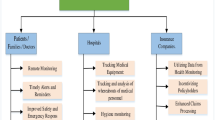Abstract
The development of radio networks has brought the problem of security specifically related to mobility of terminals sharply into focus, and has created the need for radio network operators to implement new security functionalities. The security level of the analog radio mobile systems (the so-called “first generation ” systems was very low, and these systems were often exposed to massive fraud. The development of digital radio mobile systems (the so-called “second generation” systems: GSM, DECT,. allowed the systematic introduction of cryptology based protection mechanisms. Hence, for gsm networks for instance, the main fraud and confidentiality problems were taken into account at the design stage and a security architecture was implemented to provide security services to users and network operators. The third generation mobile telecommunication systems belonging to the imt- 2000 family (which are still under specification within standardisation bodies in particular within the 3gpp worldwide third generation partnership project) will, in the forthcoming years, provide a wide variety of services on a single terminal in a multi-environment (domestic, public, business), multi-operator, and multi-service provider context. Security will be based on second generation systems security functions that have proved to be needed and reliable, and shall be adapted and improved to resolve security threats underlying to new services supplied by third generation radio systems. This document presents examples of security solutions currently implemented for protecting second generation radio mobile systems against frauds and attacks and gives an overview of potential solutions for protecting future third generation radio mobile telecommunication systems.
Résumé
Le développement des réseaux radiomobiles a mis en évidence des problèmes de sécurité spécifiques liés à la mobilité des terminaux, ce qui a conduit les opérateurs de ces réseaux à implanter de nouvelles fonctions de sécurité. Les systèmes analogiques dits de première génération présentaient un niveau de sécurité très faible, et nombre de ces systèmes étaient exposés à des fraudes massives. Le développement des systèmes numériques dits de deuxième génération (GSM, dect, etc.) a permis l’introduction de mécanismes de protection basés sur la cryptologie. Ainsi, pour les réseaux gsm, les principaux problèmes de fraude et de confidentialité ont été pris en compte dès la conception du système, et une architecture de sécurité a été mise en place pour offrir des services de sécurité aux usagers et aux opérateurs.
Les systèmes mobiles de troisième génération de la famille imt- 2000 (dont la spécification est en cours dans divers organismes de normalisation, en particulier le projet 3gpp de partenariat mondial sur la mobilité 3g) fourniront dans les années qui viennent un large éventail de services sur un même terminal, dans un contexte multi- environnement (domestique, public, professionnel), multi-exploitant, et multi-fournisseur de services. La sécurité sera basée sur les fonctions de sécurité des systèmes de deuxième génération qui ont démontré leur utilité et leur robustesse, mais elle sera adaptée pour résoudre les menaces inhérentes aux nouveaux services qui seront offerts par ces systèmes. Cet article présente des exemples de mécanismes de sécurité actuellement utilisés pour la protection des mobiles de deuxième génération contre les fraudes et les attaques, et donne un aperçu des solutions envisagées pour la protection des systèmes mobiles de troisième génération.
Similar content being viewed by others
Abbreviations
- auc:
-
Authentication Center
- bss:
-
Base Station Subsystem
- HE:
-
Home Environment
- hlr:
-
Home Location Register
- imsi:
-
International Mobile Subscriber Identity
- Iv:
-
Initialisation Vector
- kc:
-
Cipher Key
- mac:
-
Message Authentication Code
- me:
-
Mobile Equipment
- ms:
-
Mobile Station
- msc:
-
Mobile Switching Centre
- MT:
-
Mobile Termination
- rand:
-
Random challenge
- sres:
-
Subscriber Response
- te:
-
Terminal Equipment
- tmsi:
-
Temporary Mobile Subscriber Identity
- ttp:
-
Trusted Third Party
- SIM:
-
Subscriber Identity Module
- vlr:
-
Visited Location Register
References
ETSI, European digital telecommunication system (phase 2+); Security related network functions (gsm 03.20), Recommendation ets 300 534.
3GPP Specifications 21-133 (Security Threats and requirements), 33-102 (Security Architecture), 33-103 (Security Integration Guidelines), 33-105 (Cryptographic Algorithm Requirements), 33-120 (Security Objectives and Principles), 33-900 (Guide to 3G-Security).
Mouly (M.), Pautet (B.), The gsm System for Mobile Communications, Telecom Pub, 1992
Lagrange (X.), Godlewski (P.), Tabbane (S.), Réseaux GSM- DCS, édition Hermès Science, collection réseaux et télécommunications, 1999.
Walker (M.), On the security of 3gpp Networks, Lecture Notes in Computer Science, Advances in Cryptology-Eurocrypt’2000, Springer Verlag.
Author information
Authors and Affiliations
Corresponding authors
Rights and permissions
About this article
Cite this article
Baritaud, T., Gilbert, H. & Ngoc, S.N. Security services for protecting radio mobile systems. Ann. Télécommun. 55, 352–360 (2000). https://doi.org/10.1007/BF02994843
Received:
Accepted:
Issue Date:
DOI: https://doi.org/10.1007/BF02994843




